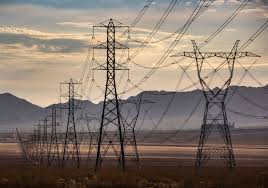Logistics Viewpoints (09/30/2024- 10/04/2024)
As a Florida native, hurricanes are a familiar part of life, shaping the experiences of millions who call the southern coastal regions home. Among the most devastating storms in the last century, Hurricane Helene ranks in the top five deadliest. It unleashed severe flooding across unexpected areas of the Carolinas, submerging coastal homes under record-high water levels. Unfortunately, such storms are becoming increasingly common. Now, more than ever, communities and all levels of government must rally to support those affected, while rebuilding in ways that strengthen resilience and preparedness for the future.

In the same week, thousands of port workers initiated a strike, demanding better working conditions, and fair pay, and pushing back against automation technologies that threaten their livelihoods. Hurricanes and labor strikes are formidable disruptions to supply chains, exposing critical vulnerabilities. This week serves as a stark reminder of the fragility of modern supply chains and the urgent need to address these underlying weaknesses.
Let’s hop into the supply chain news for the week:
FERC has Approved California Independent Systems Operators Interconnection Reform Plan


CAISO’s interconnection reforms aim to streamline California’s energy grid connection process, addressing a supply chain bottleneck in clean energy project development. The California Independent System Operator’s plan to reform its generator interconnection process includes a provision critics say gives utilities a discriminatory role in determining which projects move forward into review clusters. With a backlog of 185 GW in active projects and 347 GW from the latest application window, the reforms prioritize projects based on readiness and need, ensuring that the most viable projects can proceed despite limited transmission capacity. This will help alleviate delays in the supply chain for renewable energy, ensuring critical projects receive grid access faster, which in turn supports California’s renewable energy goals. However, concerns remain about potential favoritism towards utility-affiliated projects, which could impact fair competition in the energy supply chain.
47,000 Dockworkers Go on Strike


Harold J. Daggett, president of the International Longshoremen’s Association (ILA), is leading a significant strike at major East and Gulf Coast ports, disrupting supply chains and halting trade. The union, representing 47,000 members, is pushing for higher wages, better benefits, and limitations on labor-saving technologies. Dockworkers claim the corporations have had multiple years of record profits and have not seen evidence of those revenue increases reflected in their pay. The U.S Maritime Alliance, the group negotiating with for the ports has offered 50% raises over the six-year life of the contract but the union has signaled that it plans on sticking with its initial 77% pay increase over six years. This is the first time since 1977 that dockworkers have gone on strike spanning over 36 ports in East Coast and Gulf Coast ports. A one-week strike could cost the U.S. economy nearly $ 3.8 billion and increase the cost of consumer goods. Daggett frames the strike as a battle against multinational corporations profiting from pandemic-related supply chain chaos, asserting the union’s essential role in the logistics of global trade.
One of New England’s Oldest Coal Plant Is Sold by Dynegy to Brayton Point


Old coal plants, like Brayton Point in Massachusetts, are sometimes repurposed rather than simply retired. Brayton Point, once New England’s largest coal plant, faced various ownership changes and economic decisions over the years. Despite billions spent on environmental upgrades by Dominion Energy, subsequent owners, including Energy Capital Partners and Dynegy, found it economically unviable to convert the plant for gas power or other energy production. In 2015, Dynegy closed the plant and eventually sold it to Commercial Development Company (CDC), which intends to demolish the site and market it for wind energy projects. The site’s prime location for offshore wind power development and its infrastructure make it ideal for wind-related industrial purposes. CDC has repurposed other coal plants similarly, reflecting a shift towards renewable energy. CDC plans to turn the retired coal plant into an industrial port and staging area for the offshore wind power industry.
Redwood Logistics Reveals Industry Shifting Logistics Health Assessment Solution
Redwood Logistics has introduced a Logistics Health Assessment aimed at helping companies identify and address logistics challenges, particularly in response to supply chain disruptions, demand volatility, and rising customer expectations. This assessment goes beyond typical industry analyses by examining transportation technology applications and partnerships, as well as benchmarking existing 3PL performance. It provides tailored insights on procurement, transportation, global trade, and warehousing, offering solutions that integrate data, analytics, and automation. Redwood offers three levels of assessment, from foundational analysis to customized transformation roadmaps, helping companies improve logistics performance and competitiveness.
Rural areas hit by Helene May Not Regain Power for Weeks


Last week, the Southeastern United States was hit by category 4 hurricane Helene causing upwards of +100 deaths and leaving a massive amount of wreckage behind. The storm knocked out power to 6 million customers and devastated communities across the southeast U.S. Many rural and remote consumers in this area are a part of electric cooperatives which are difficult to restore. Electric cooperative customers are about 1.25 million of the total outages, more than half of those have been restored. In total, 1.3 million electric users remained without power on Wednesday. This could take days, or weeks, and depends on the amount of damage the location sustained. Mike Couick the CEO of Electric Cooperatives of South Carolina said that they are sending out 30 trailer truckloads of materials every day out of our supply cooperatives. The supply chain is not suffering from shortages but the amount of materials being sent out in 3-4 days is equivalent to six months to a year. For example, the South Carolina cooperative has about 2,000 downed power poles, and areas near the Savannah River and adjacent to the Blue Ridge Mountains were affected.
Song of the week:




















